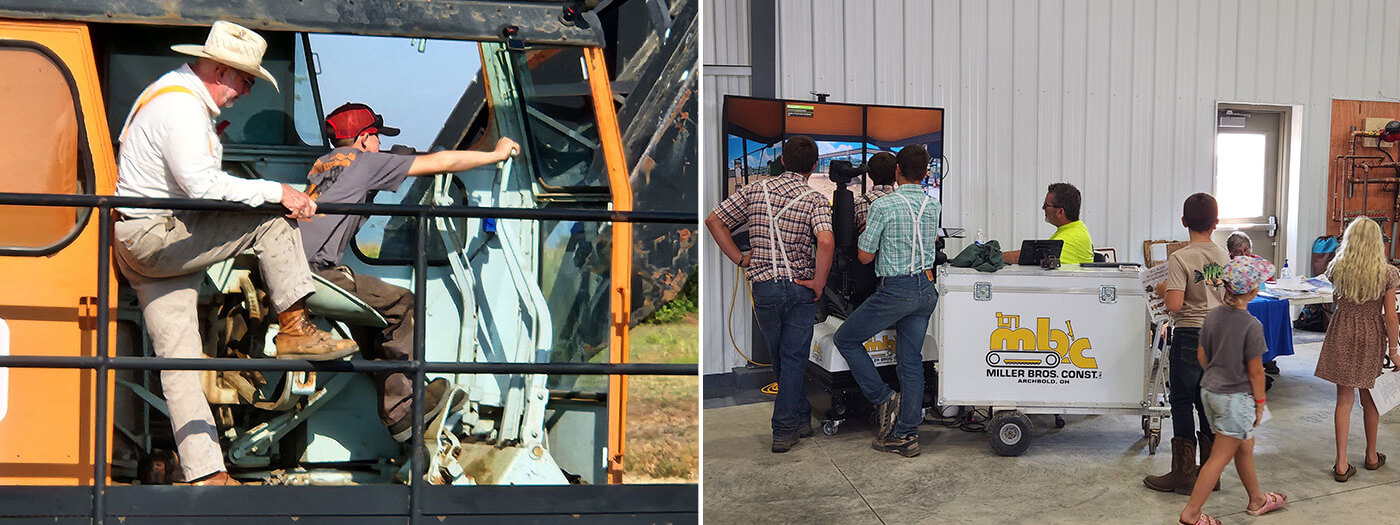President’s Message – Latest Scoop 2025 Issue 3
“The Good Old Days?”
I attended the Historical Construction Equipment Association’s (HCEA) annual show that was held on September 17-20 in Bowling Green, Ohio. My very patient and understanding wife, Ronda, accompanied me as part of a short vacation to northern Ohio and to visit relatives. Yes, she knew what she was getting in for since we attended one together over 20 years ago. That means I’m on my own for any HCEA shows over the next 20 years!
The great part about HCEA shows is that you see, hear, and smell historical construction equipment working and operating, in addition to seeing those restored to new condition. The HCEA has its own collection of machines whose advancements were pivotal to the construction industry, in addition to those brought to the show from members across the country.
As we walked the show grounds, listened to the rumble and roar of old diesel engines, and watched the skillful hands of operators re-living days gone by, I made several observations in contrast to today’s equipment operations. We sometimes hear construction folk say they miss ‘the good old days’. While there are some aspects of simpler times that we miss, keep reading for a reminder that we’re very grateful for many advances!
Function-centric to Operator-centric Design
Operator positioning and controls were located as dictated by the mechanical design of the machine, rather than what worked best for the operator. For example, in the accompanying photos you’ll note the placement of an operator’s seat right next to the dump bed on an early off-road dumper, or next to open gears and cables. Thankfully, today’s equipment manufacturers are focused on operator safety, access, visibility, comfort, and fatigue reduction.

Capabilities
The mass and size of old equipment is hard to miss—heavy castings, huge rivets in steel beams and plates, and later, thick plates of steel welded solidly together. Much of this design was driven by a lesser understanding of the strain and stress points than can be modeled today in computer-aided design simulations. In fact, if you look closely on many old machines, you’ll see repair plates and welds at the weak points, despite the overall mass of the machine.
New design tools have led to a massive increase in horsepower-to-weight and break-out-force-to-weight ratios over the last 40 years. In fact, most of today’s equipment is programmed to prevent it from being over-loaded or exerting force beyond its design capabilities. These are significant changes that have many benefits including lower overall machine weight to get the same job done, massive increases in energy efficiency, and lower ground pressure in some machines.

Exchange of Complexity
Construction equipment in the first half of the 20th century typically carried a forest of levers and pedals with a myriad of adjustments the operator needed to achieve the best performance from it. Despite this complicated aspect for operators, the overall mechanical designs were generally straight-forward. One could quickly see most problems when a breakdown occurred.

The complicated levers and adjustments for operators and simple mechanical design were exchanged over the past 70+ years for simpler operation but very complex systems. This complexity is designed to optimize or customize machine performance, reduce emissions, often from a touchscreen in the cab or a technician’s laptop, even a monitoring lab across the globe.
I noticed a heart-warming common theme that spanned both old and new – the importance of training the next generation. Whether it is grandpa coaching from the catwalk of an old NorthWest crane with a clamshell bucket, or kids honing their operating skills on a modern equipment simulator, inspiring and developing the next generation is our responsibility. What skills, resources, and stories do you have to share with those who have yet to join our industry?
